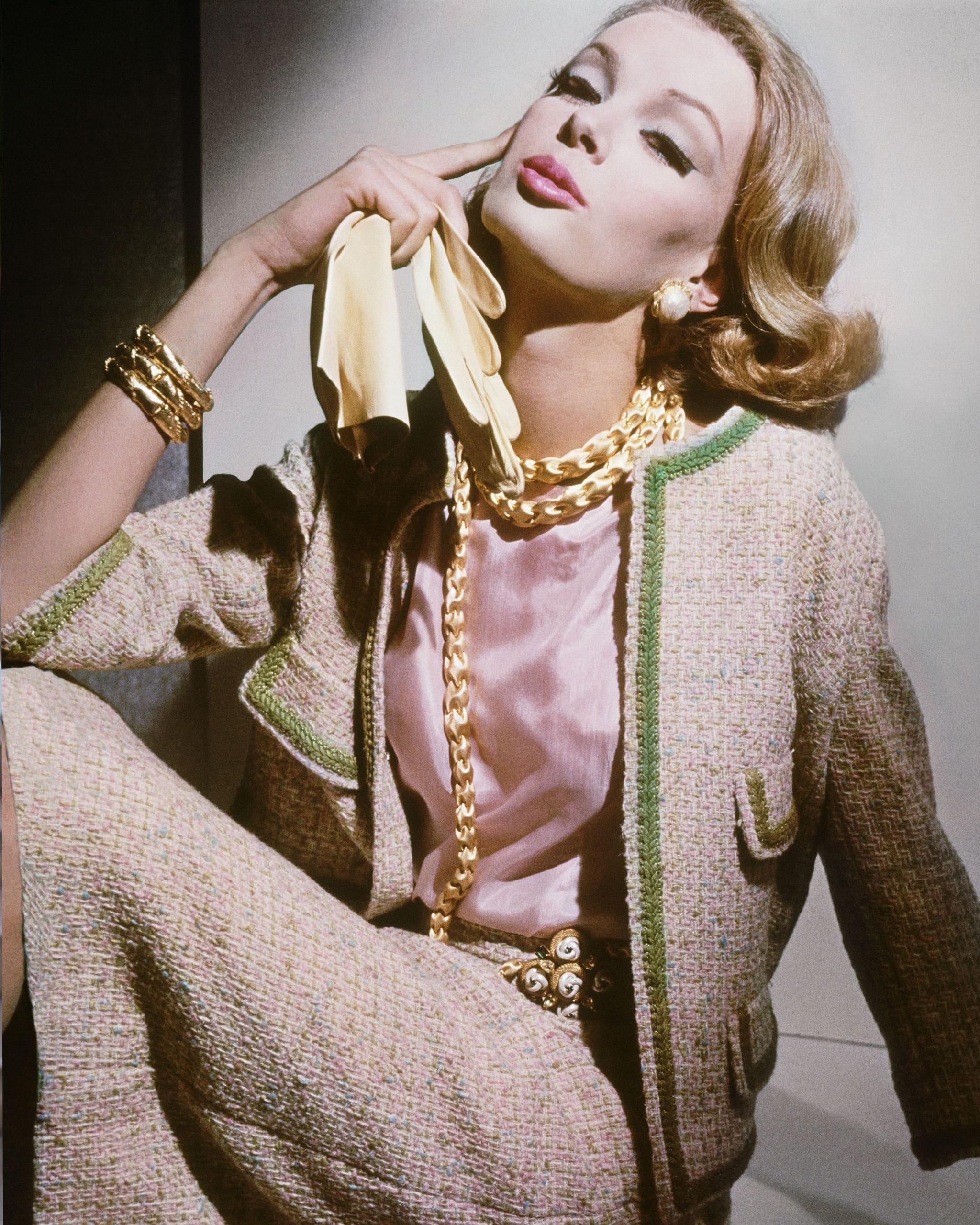Horst P Horst/Condé Nast/Shutterstock
“When it comes to understanding the times and what it called for, and seizing that opportunity, no one did that better than Chanel,” says Oriole Cullen. For the V&A’s latest fashion extravaganza, Gabrielle Chanel. Fashion Manifesto – somehow only the UK’s first exhibition dedicated to the work of the legendary couturière – the curator has expanded upon the Parisian Palais Galliera’s recent retrospective of the same name, adding 120 rare items that chart the designer’s career from her first millinery boutique on Rue Cambon in 1910 to global prominence and, eventually, her final collection, presented weeks after her death in 1971.
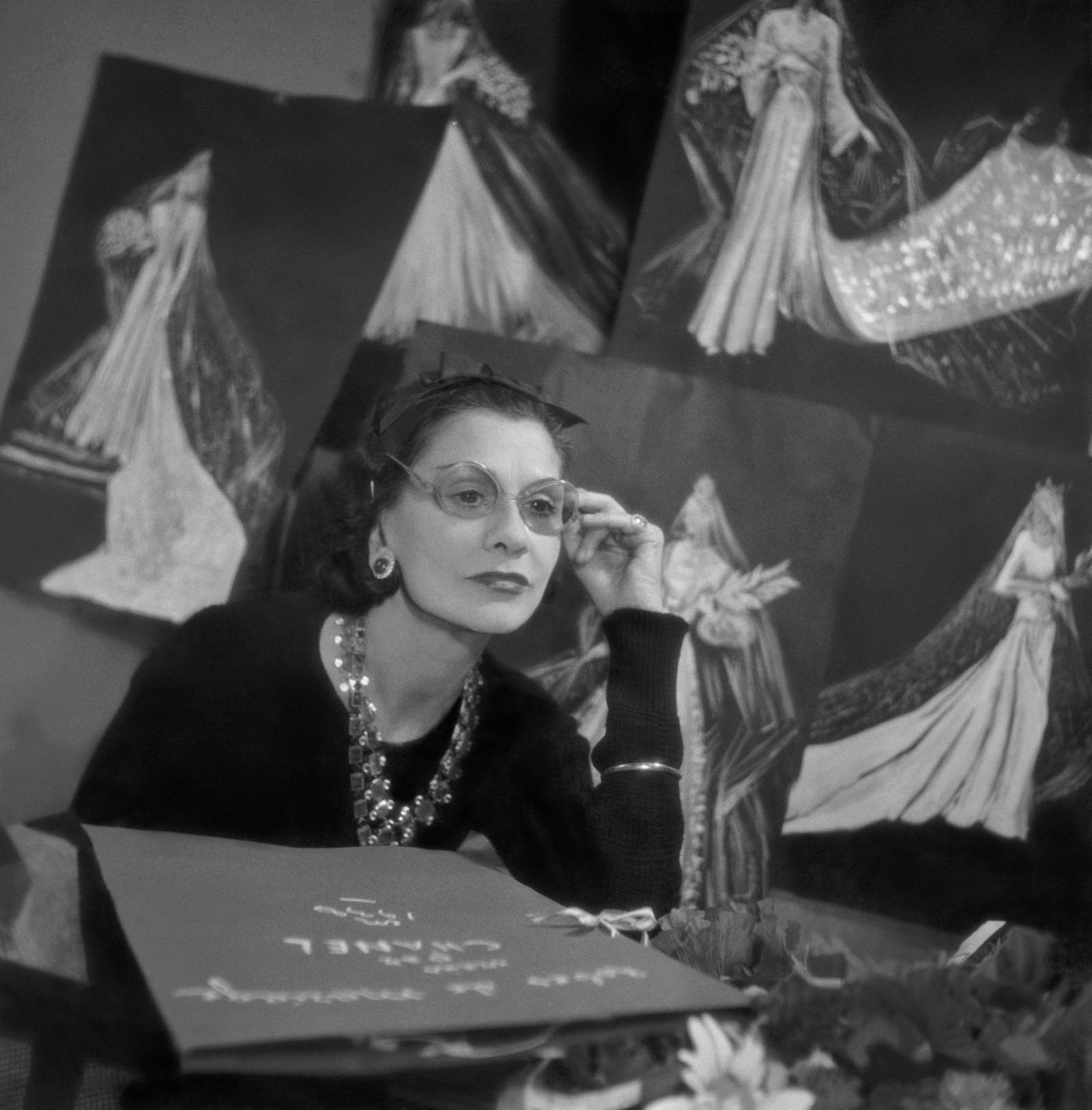
The showcase, however, begins some years before that: in the first room, an extended timeline lays out the major milestones of Chanel’s life, starting from her birth in 1883. “I think most people think of her as a 20th-century designer, and don’t realise she was born in the 19th century, and what comes with that,” Cullen tells me, by way of explanation, as we walk through the space, dodging gallery staff who are still installing panes of glass and plates of text. Beside this timeline, you’ll find a framed, signed handprint from Chanel herself from 1939, and a photograph of the designer from 1937 by Horst P Horst, which shows her reclining on a chaise longue, resplendent in black, with glittering jewellery and a bow on her head. It’s a fitting opener for an exhibition that centralises Chanel’s own image, focusing on how the couturière made herself the poster girl for her own brand of easy, understated glamour, and how her personal fingerprints, metaphorically speaking, are always visible in her work.
The first garment we encounter, in a room with projections designed to mimic the bustle of Rue Cambon, is one of the brand’s earliest surviving pieces: a marinière blouse from 1916, made from fine-gauge silk jersey, which is startling in its modernity. Beside it, you’ll find an early example of one of Chanel’s hats, too, as well as faded footage of one of her clients strolling down the Champs-Élysées in her designs. It’s remarkable to see the gentle movement of her skirt and the ease of her structured but uncorseted waistline, highlighting how revolutionary these shifts in style would have felt for women at the time.
That relaxed, streamlined sensibility pervades the next few rooms, which explore Chanel’s honing of her signature style in the ’20s and ’30s, with a focus on clean lines, classic silhouettes and fluid fabrications. Here you’ll find wonderful early photographs of elegant women wearing Chanel in Paris or Biarritz, as well as costumes designed for illustrious performers: the ballerina Lydia Sokolova, for instance, who donned a pink Chanel bathing suit for 1924’s Le Train Bleu; or Gloria Swanson who sported floor-length ball gowns, sharp skirt suits and diamanté-encrusted cocktail dresses by Chanel in the 1931 comedy Tonight or Never, after the designer signed a $1 million Hollywood contract with the prolific producer Samuel Goldwyn.
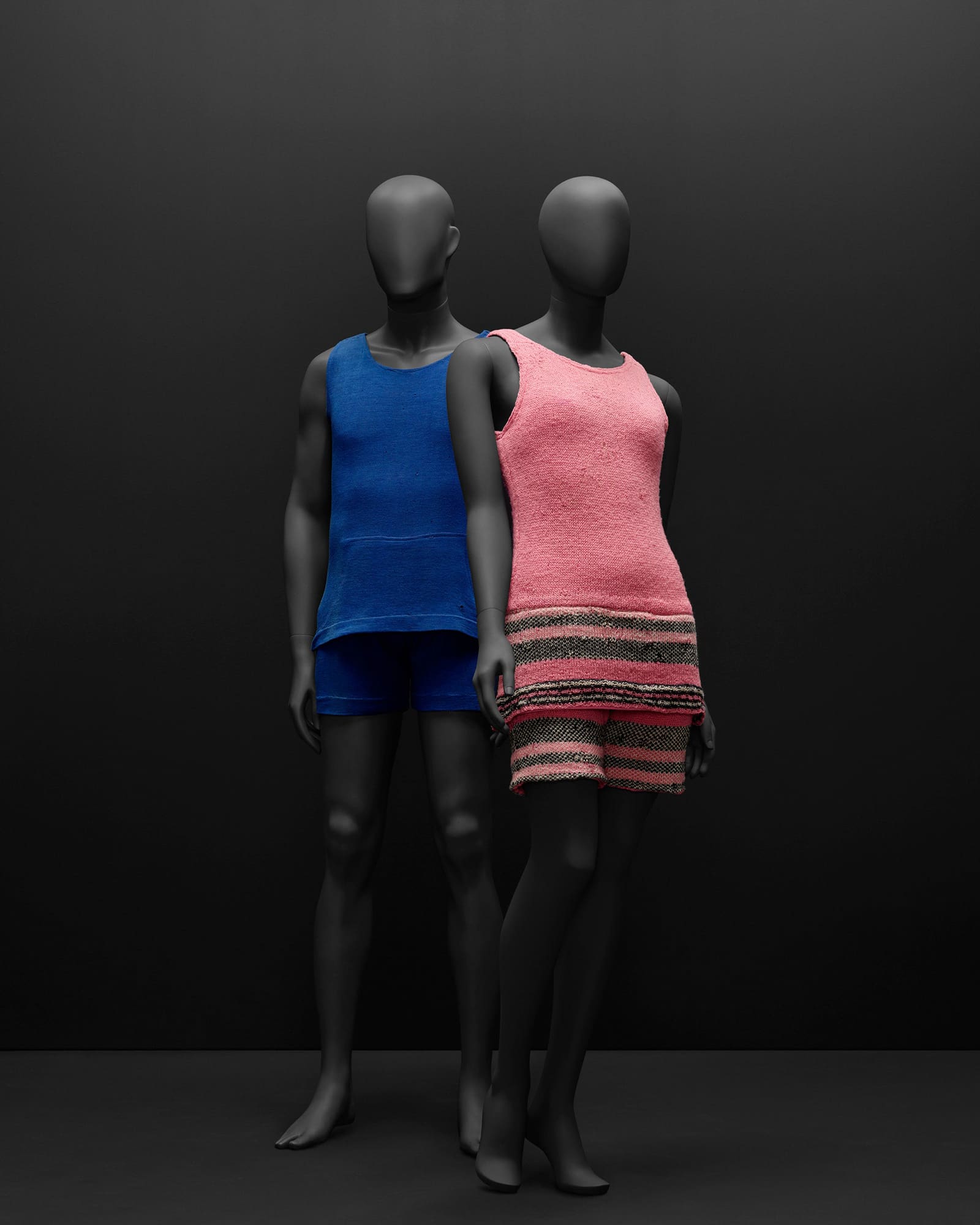
There are countless little black dresses in this section, too, from ones with paper-thin lace sleeves to a strappy frock with an embroidered tulle train. “We found this in an Italian archive, and I said, ‘I’m sure it’s Chanel,’” Cullen adds of the latter, pointing out the delicate seaming. “Other people weren’t sure, and then they called me later and said, ‘We found a Chanel label inside!’” There are more surprises to be found nearby, in a portion of the exhibition that explores the British influence in Chanel’s designs, partly born out of her relationships with Boy Capel and the Duke of Westminster. “She was an Anglophile who could often be found fishing and hunting in hiking boots and tweed,” continues Cullen. Beside footage from one of Chanel’s British fashion shows from 1932, in which society stalwarts modelled designs made from British textiles, there are also photographs of her with her British paramours, alongside a painting of her in a slouchy coat and hat by her friend Winston Churchill.
After this, you’ll encounter a stark white room designed to echo the clean lines of a giant perfume bottle, crowned with a pale pink light refracted gently from a projector near the ceiling – a tribute to Chanel N°5, the fragrance beloved by everyone from Marilyn Monroe to Queen Elizabeth II. Here you’ll find early perfume bottles and other examples of Chanel beauty products from the ’20s – lipstick cases, compacts, tanning products – but also a letter from the former monarch, penned in 1955 and addressed to Frederick Browning, then the treasurer in the office of the Duke of Edinburgh, who’d given her a bottle of the perfume for her birthday. “As usual, you have discovered just the very thing I particularly wanted,” she wrote. “I am already using it and, I hope, smelling all the better for it!!”
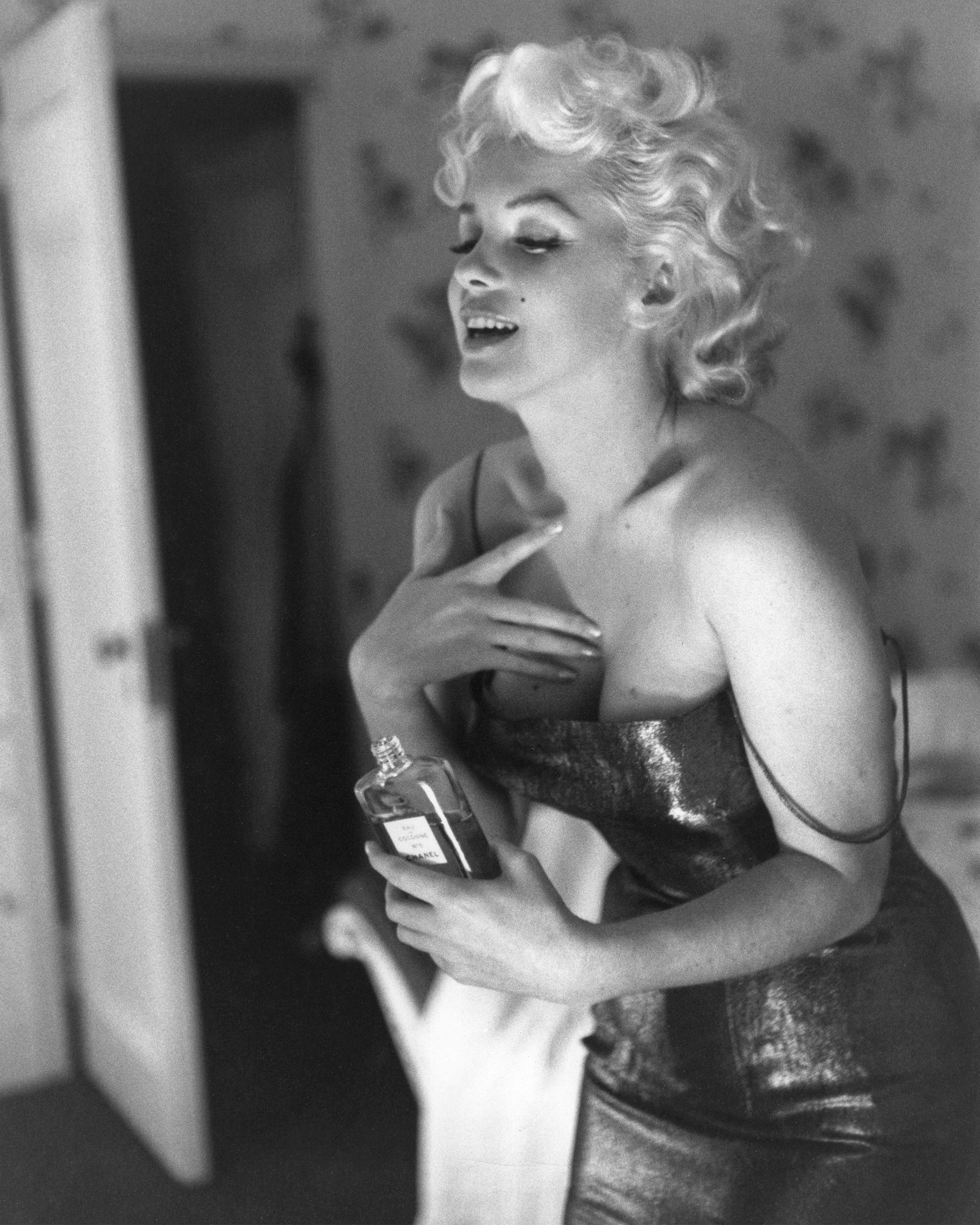
Beyond this room is a cavernous space lit up with projections of sun-dappled trees to recall the atmosphere of Chanel’s villa in the south of France, and filled with lace ball gowns and bejewelled showstoppers (look out for former Vogue editor Diana Vreeland’s sequined trouser suit, worn for entertaining at home); and past that, a section which is the polar opposite of the bright, white perfume room: a small, dark and appropriately sedate space which recounts Chanel’s closure of her eponymous house during World War II. This portion of the exhibition acknowledges that the Nazis considered Chanel a trusted source in 1941, but also features recently unearthed records that show that she joined the French Resistance in 1943. “There’s still more research to be done on this front, and this doesn’t provide answers, but it further complicates her legacy,” explains Cullen.

From here on out, the exhibition builds up to a triumphant crescendo: to mark Chanel’s return to fashion in 1954, we’re led into a jaw-dropping room filled floor to ceiling with immaculate, candy-coloured Chanel suits; a corridor lined with 2.55 handbags and two-tone slingbacks; a showcase of her opulent ’60s evening wear and baroque costume jewellery; a corner dedicated to her ravishing costume work on Alain Resnais’s 1961 French New Wave classic Last Year at Marienbad; and an epic final room with a grand, mirror-lined staircase, like Chanel’s own in her atelier on Rue Cambon. Standing on it are mannequins in intricately detailed monochrome evening dresses (the silver one at the very top of the stairs is one Elizabeth Taylor wore to meet Princess Margaret in 1967), but elsewhere in the room, you’ll also find dresses with vibrant pops of colour – examples of Chanel nodding to the exuberant new mood of the late ’60s in the final years of her life.

Cullen particularly loves one chiffon gown from 1968 which has eye-popping, rainbow-coloured panels and is paired with a matching, thrillingly dramatic neck scarf. For those who consider Chanel a byword for sophisticated minimalism, it’s something of a shock to see. “When we asked the Chanel archives about this dress, I think they were quite alarmed,” laughs Cullen. “But I was like, ‘No, we need to celebrate this!’” She hopes the exhibition will open people’s eyes to the designer’s true range. “There are so many wonderful lamé pieces here, out-there patterns and so many things you may not ordinarily associate with her. People think of her as quite serious, but she had a great eye for bold colours and prints. It’s very playful and fun.”
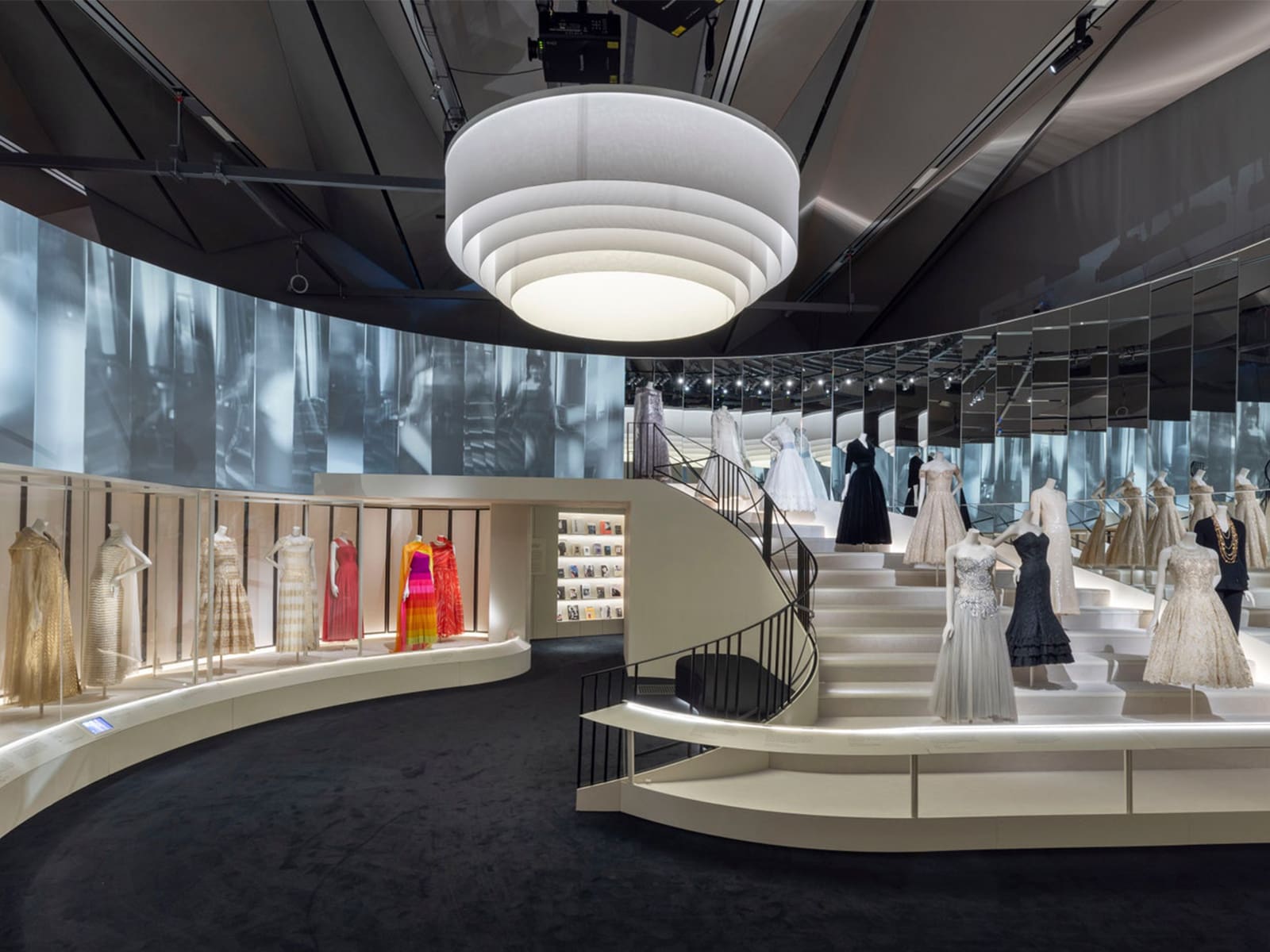
This is not, however, the look the show ends on – that can be found just around the corner, past a cabinet of books and biographies bearing Chanel’s image: a deceptively simple black wool suit with a priest-like white collar, and hat from 1969. From its structure to its colours, it embodies Chanel’s house codes and is believed to have been worn by the designer herself, though no photographs exist of her in it. For Cullen, it sums up the magnetism and elusiveness of her subject. “The closer you feel you’re getting to her, the further away she seems to get,” she muses. “And that’s the thing about Chanel – from those bright ’60s dresses to this, she created things that didn’t date, so she was working against fashion, in a way. She took French sophistication and transgressed its norms. She was a radical, rebellious figure, so it’s ironic that she’s now come to embody this classic elegance. That tension is crucial to the story we’re telling here.”
As you exit the space, you do so via another mirrored staircase, one which will surely become a venue for spontaneous photoshoots and selfie-taking once the exhibition opens to the public on 16 September. Chanel, a woman who understood the power of promoting her own image and refracting it endlessly to reflect the changing times, would certainly approve.
This article was originally published on British Vogue.
